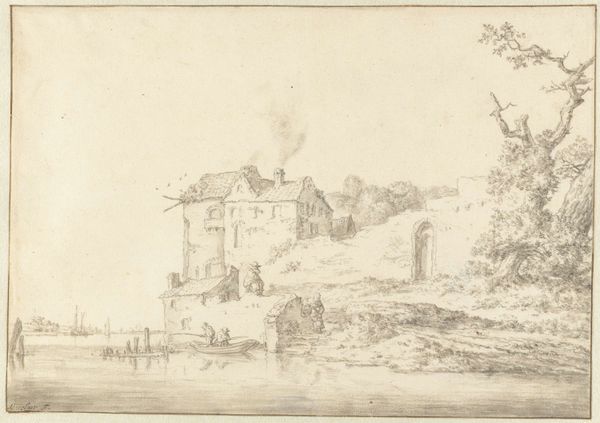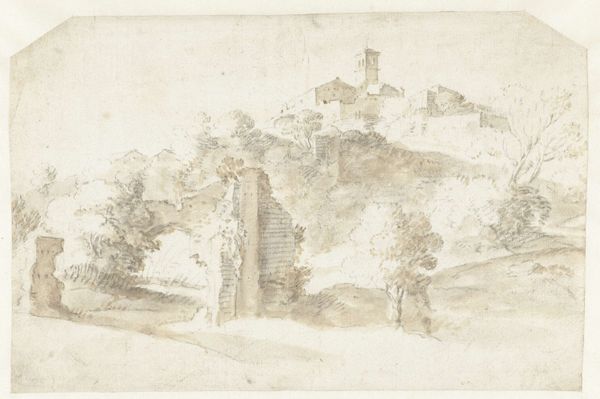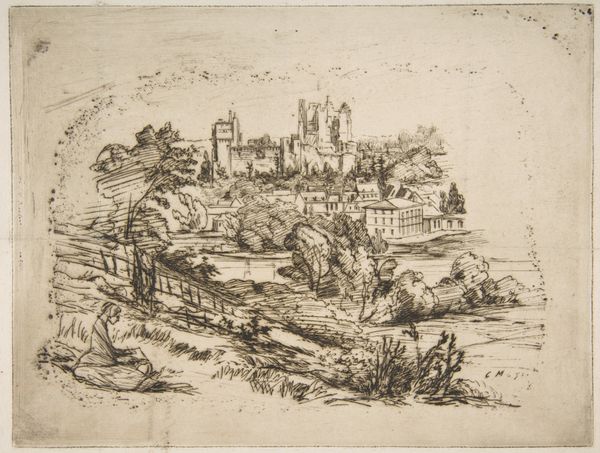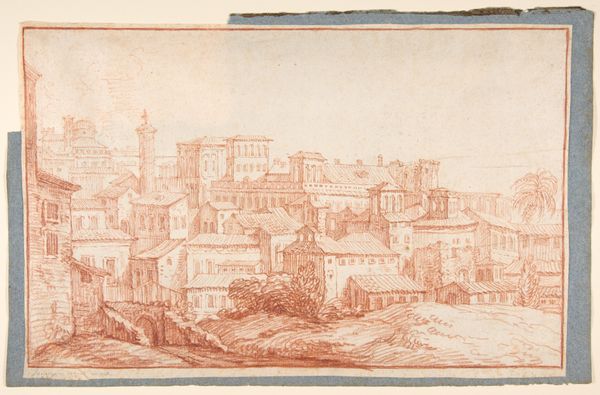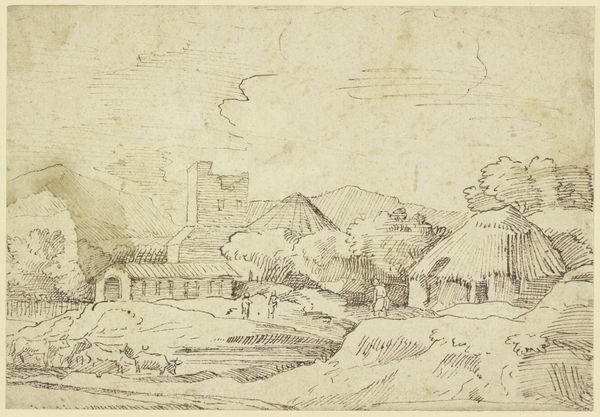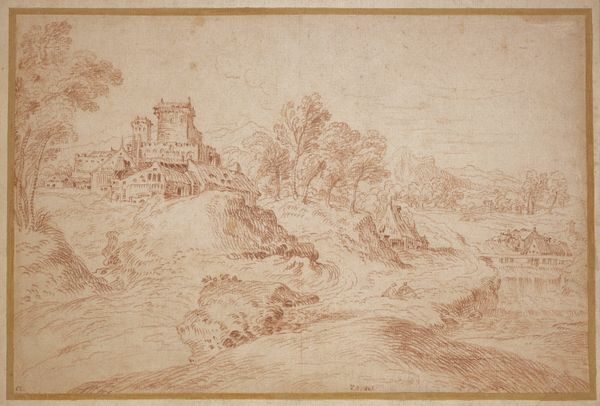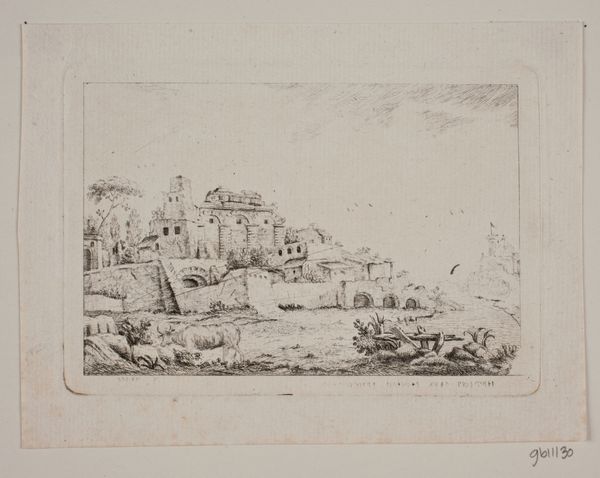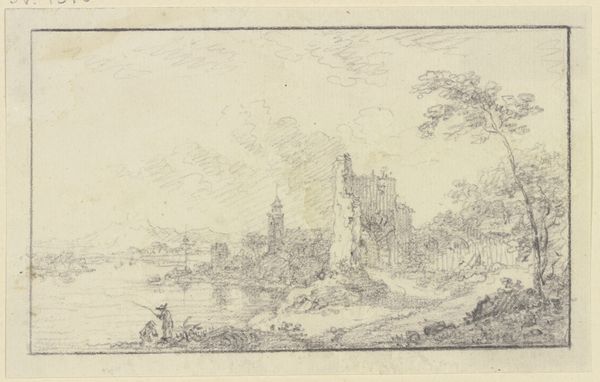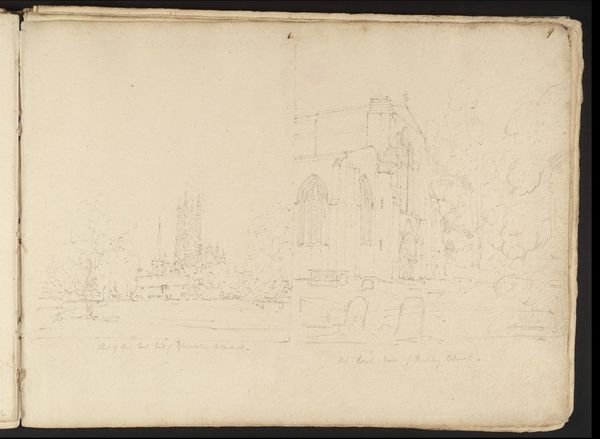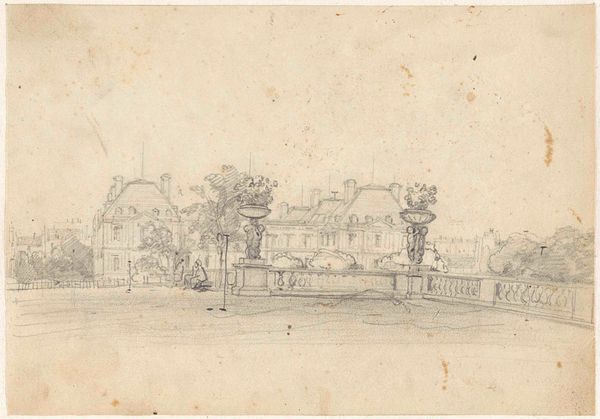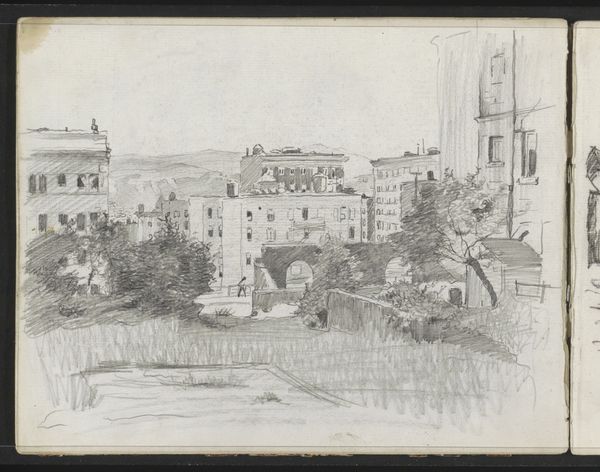
drawing, pencil
#
drawing
#
landscape
#
pencil
#
italian-renaissance
Dimensions: height 212 mm, width 267 mm
Copyright: Rijks Museum: Open Domain
Curator: This is "Italiaans landschap" or "Italian Landscape" by Elias van Nijmegen, created sometime between 1677 and 1755. The piece is a drawing, primarily executed in pencil. Editor: My first thought is that this work has an incredibly muted quality. The pencil lends itself to a dreamlike depiction of a city in the distance, almost like a faded memory. Curator: It's fascinating to consider the choice of pencil as a medium here. Rather than oil or watercolor, the artist selected a relatively humble material. Pencil drawings often served as studies or preparatory sketches for larger works. It makes you wonder about Van Nijmegen's process: was this meant to be a finished work or a step towards something more elaborate? Editor: Absolutely! I'm also struck by the symbols of history. Those buildings in the distance evoke the grand narratives of empires and classical knowledge, reduced here to faint, almost ephemeral, outlines. Curator: You're right. There's a layering of time happening. Van Nijmegen, a Dutch artist, is depicting an Italian landscape referencing antiquity through this specific handling of humble materials. The economic exchange embedded in his travel and work also tells a story of craft distribution. How the artist learned and adapted these drawing techniques and the availability of such materials tells you also something of his formation and market opportunities. Editor: And those faint lines create a sense of distance, both physical and temporal. It's as though the artist is showing us not just a place but a reflection on the weight of history and culture. A place burdened by classical aspirations. Curator: I wonder if he directly drew on the motif and style of renaissance painters like Leonardo. If we consider what art students learn from their atelier and how the knowledge passes from generations, maybe it shows how they internalized certain styles through working with these techniques. Editor: It almost invites us to contemplate the fragility of these grand narratives when filtered through personal memory and experience, doesn't it? It's interesting what choices he made with this accessible material. Curator: Indeed. Examining Van Nijmegen’s “Italian Landscape” we learn something about its role in the creative process of 17th and 18th century Dutch masters as they engaged with an expanding visual world. Editor: Agreed, a wonderful peek into a moment of personal reflection and broader historical engagement.
Comments
No comments
Be the first to comment and join the conversation on the ultimate creative platform.
